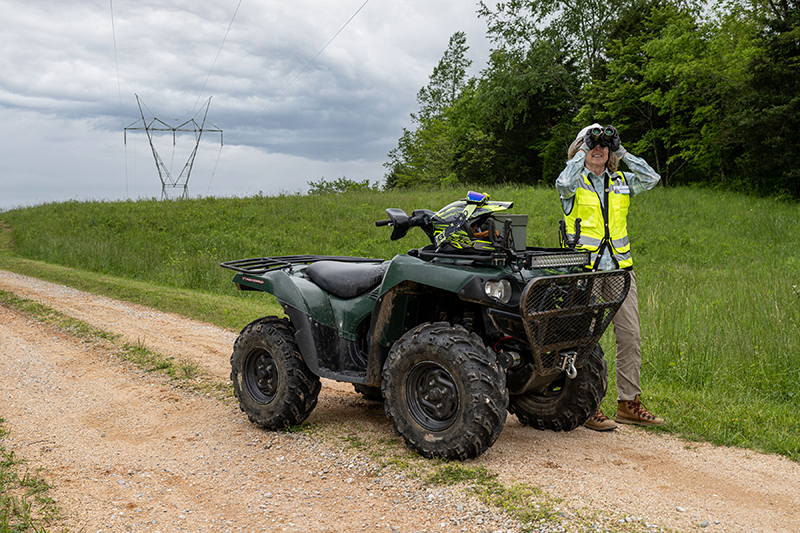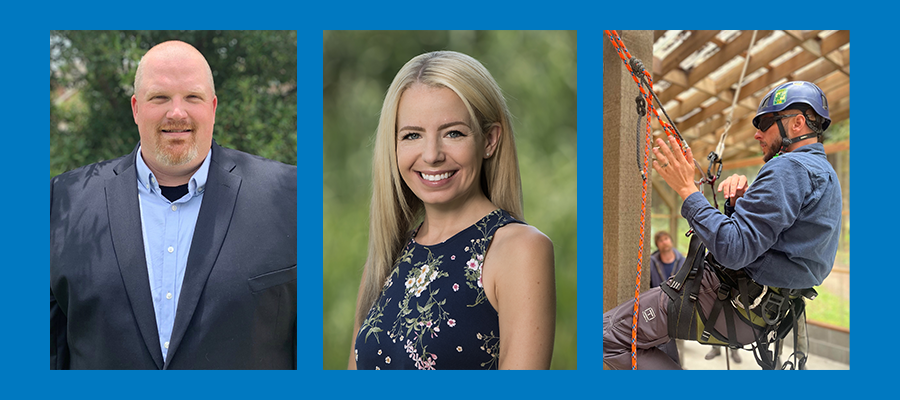- Vegetation Management Services
- Industries
- In Your Neighborhood
- About
- Careers
- Webinars
- Articles
Fostering a Culture of Safety: Building from Within

Fostering a Culture of Safety: Building from Within
By Adrienne Jones, Safety Manager, ACRT
In the realm of workplace safety, attitudes matter just as much as procedures and protocols. An effective safety program isn’t merely a set of rules enforced from above; it’s a mindset deeply ingrained in every level of an organization. From the executive suite to the front lines, a culture of safety must be more than a priority — it must be a core value.
Safety managers used to be seen only as fault-finders, waiting in the wings to catch people doing something wrong. Today, we recognize that safety is not about assigning blame but about leaning into learning and preserving the well-being of our most valuable asset: our employees. It takes people who lead by example, fostering an environment where curiosity, accountability, and transparency take precedence.
Finding our “why” resides at the heart of this belief system. Why do we prioritize safety even when it inconveniences us? The answer lies in recognizing that safety is not meant to be convenient; it’s imperative to preserve our “why”. Every safe choice we make is a testament to our own personal “why” and a commitment to the people who drive our organizations forward.

How Does Storm Response Work?
Get answers in this storm/emergency response overview.
Transparency and clarity serve as cornerstones of a culture of safety. We owe it to ourselves and our colleagues to communicate clearly about training, rules, procedures, and policies, holding each other accountable along the way. Clear, accessible guidelines ensure that everyone, regardless of tenure or expertise, can navigate the complexities of real work with confidence in their personal safety.
In this cultural shift, employee engagement is essential. By inviting diverse perspectives to the table, we enrich our understanding of safety and empower individuals to contribute meaningfully. Every voice matters — especially those that challenge the status quo. It’s the collective wisdom of our teams that drives us toward safer practices.
Recognizing the uniqueness of each individual, we acknowledge that safety is not one-size-fits-all. Tailoring training and messages to resonate with diverse audiences ensures that no one is left behind. Inclusivity isn’t just a buzzword; it’s a principle that supports our commitment to safeguarding every member of our workforce.
Accountability to oneself and each other forms the backbone of our safety culture. Utilizing indicators such as near-miss reports and safety audits, we identify trends and address hazards before they escalate. Rather than assigning blame to individuals, we scrutinize the systemic factors at play, asking not “who” but “how” and “why.”
This shift in perspective — from blame to understanding — requires thoroughness, curiosity, and self-examination. We must resist the temptation to take shortcuts, opting instead to dive into the details of our systems, invite more perspectives to the conversation, build our relationships, allow for innovation, and celebrate our successes. We discover chances to get better and strengthen our defenses for what lies ahead.
Ultimately, fostering a culture of safety is a journey, not a destination. It requires continual reflection, adaptation, and a collective commitment to progress. As we strive to build safer workplaces, let us remember that our greatest strength lies not in our procedures or protocols but in our shared dedication to the well-being of each other. People care about what they help to create. Together, with a shared sense of purpose, our industry can move forward with the notion that building a culture of safety is a journey we all contribute to, paving the way for a safer, more resilient future.
This article was originally published in the 2024 July/August edition of the UAA Newsline.
Related Articles

Servant Leadership in Utility Vegetation Management By C. Troy Ross, President, ACRT and ACRT Pacific On a chilly Monday morning, a utility vegetation management crew gathers for their weekly briefing. Instead of launching into instructions, their supervisor begins by asking each team member how they’re doing. One mentions a child’s illness, another shares excitement about[...]
Read More
Turning Vegetation Waste into Opportunity By Aana Agrawal, Sustainability and Resilience Manager, EnviroScience The utility vegetation management (UVM) sector plays a crucial role in ensuring the smooth transmission of power across regions and cities by keeping plant growth under control within the vicinity of transmission and distribution lines. However, unrefined vegetation maintenance practices often focus[...]
Read More
Reflections from Will Nutter Silver Shield Award Recipients By Bob Urban, Senior Manager, ACRT Services In an industry where the stakes are high and every decision can have life-altering consequences, leadership in utility arboriculture isn’t just a managerial function; it’s a calling. Nowhere is this more evident than in the recipients of the Will Nutter[...]
Read More
The Electric Butterfly: Reconnecting with Nature on the Edges By Ryan Meccage, Business Development Manager, ACRT Services In an age dominated by smartphones, constant connectivity, and algorithm-driven content, we’ve never been more digitally immersed. Yet somehow, we’ve also never felt so far removed from the natural world beneath our feet. The urge to step away[...]
Read MoreRecent Posts
- Alex Fields Awarded ACRT Safety Challenge Coin 20th Nov 2025
- Servant Leadership in Utility Vegetation Management 12th Nov 2025
- ACRT Honors Our Veterans 10th Nov 2025
- Anna Davis Awarded Safety Challenge Coin 04th Nov 2025
- ACRT Senior Consulting Utility Forester Recognized as Safety Superstar 15th Oct 2025
Categories
The Leader In Vegetation Management
We are all about people, and we put safety first. Ready to work with our well-trained team?